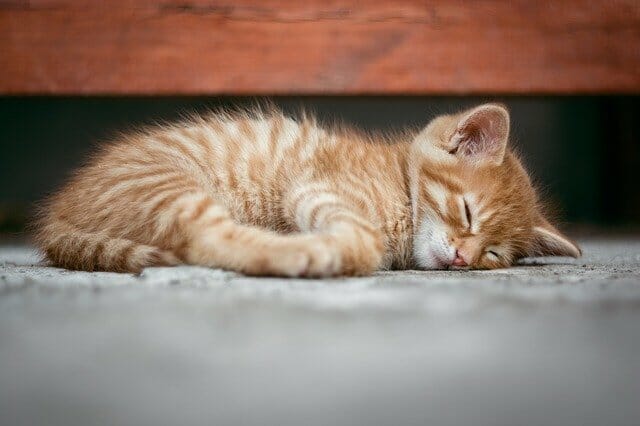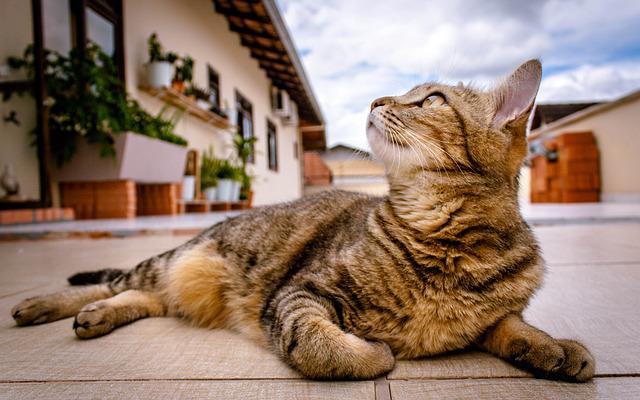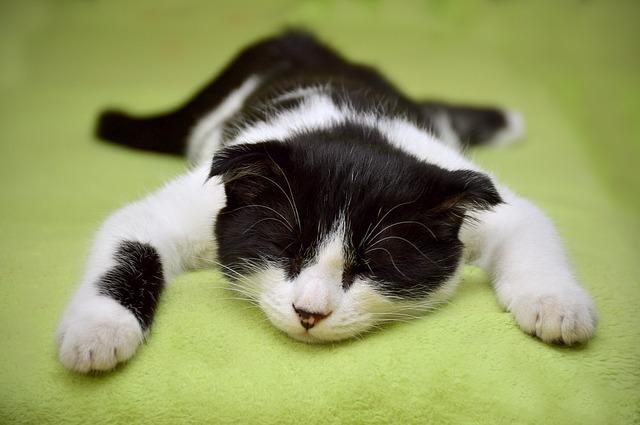Does Cat Get Periods: What You Need to Know About Cat’s Reproductive Cycle
No, cats do not get periods as humans do. Female cats have a reproductive cycle involving going into heat, also known as estrus. During this time, the female cat may display increased vocalization, restlessness, and rubbing against objects or people. They may also adopt a position known as lordosis, where they crouch down with their hindquarters raised and their tail to the side in preparation for mating.


Table of Contents
Cats and Estrus
Estrus, also known as being in heat, happens during puberty, according to the VCA Animal Hospital. It is a natural part of a female cat’s reproductive cycle. During this time, a female cat’s body releases hormones that signal to male cats that she is ready to mate. This can lead to behavioral changes in the female cat, such as increased vocalization, restlessness, and rubbing against objects or people.
If a female cat does not mate during their estrus cycle, it will eventually go out of the heat but will continue to cycle until they mate or the breeding season ends. This cycle can repeat itself multiple times throughout the year, especially in cats that have not been spayed.
Cats in estrus can be quite difficult to manage, as they may display disruptive behaviors, such as excessive vocalization or attempting to escape the house to find a mate. To prevent these issues, it’s recommended to spay female cats before they reach sexual maturity. This procedure removes the reproductive organs and eliminates the hormonal fluctuations that cause cats to go into heat.
In addition to reducing unwanted behaviors, spaying also has health benefits for cats, such as reducing the risk of certain reproductive cancers and infections. Therefore, discussing the spaying procedure with a veterinarian is important to determine your cat’s best action.
Signs of Estrus in Cats
Increased Vocalization
Increased vocalization is a common sign of estrus in cats. Female cats in heat may become more vocal, meowing more frequently and for longer periods because they are trying to attract male cats and signal they are ready to mate. The meows may be more intense, persistent, and like yowls or screams.
Suppose you notice your female cat is meowing excessively or in a different way than usual, and you suspect she may be in estrus. In that case, keeping her indoors and away from male cats is important to prevent unwanted mating. Having your cat spayed is also recommended to eliminate the hormonal fluctuations that cause cats to go into heat, which will also reduce excessive vocalization.
Restlessness


Restlessness is another common sign of estrus in cats. Female cats in heat may become more active and restless than usual, pacing or walking around more frequently. They may also seem agitated or anxious and exhibit unusual behavior, such as rubbing against objects or people.
It’s important to keep your cat indoors and away from male cats during this time to prevent unwanted mating. Additionally, spaying your cat is recommended to prevent the hormonal fluctuations that cause cats to go into heat, which will eliminate restlessness as a sign of estrus.
Urinating More Frequently
Urinating more frequently than usual is a common sign of estrus in cats. Female cats in heat may urinate more often, and they may also urinate outside of the litter box. This is because the hormonal changes during estrus can affect a cat’s bladder and urinary tract, making them feel like they need to urinate more frequently.
If you notice that your female cat is urinating more frequently than usual, it’s important to keep the litter box clean and easily accessible. For example, if your cat is urinating outside the litter box, you may need to provide additional litter boxes or try different types of litter to see what your cat prefers. Having your cat spayed is also recommended to prevent future episodes of estrus and increased urination.
Change in Appetite
A change in appetite is a possible sign of estrus in cats, although it is not always present. Some female cats may experience a decreased appetite during their heat cycle, while others may have an increased appetite. It’s also possible for some cats to not show any changes in their appetite during estrus.
Suppose you notice a significant change in your cat’s appetite during its heat cycle. In that case, it’s important to continue offering them high-quality cat food and ensure they eat enough to maintain a healthy weight. If you are concerned about your cat’s eating habits or appetite, it’s a good idea to consult a veterinarian to rule out any underlying health issues.
Raised Hindquarters
Raised hindquarters are a common sign of estrus in female cats. This behavior is known as “lordosis” and is a way for female cats to indicate to males that they are receptive to mating. The cat will arch her back and lift her hindquarters, often while vocalizing or rubbing against objects.
If you notice your female cat exhibiting this behavior, it’s important to keep her indoors and away from male cats to prevent unwanted mating. Additionally, spaying your cat is recommended to prevent future episodes of estrus and associated behaviors such as raised hindquarters.
Increased Affection
Increased affection is not typically considered a sign of estrus in cats, as they may show affection at any time. However, some cats may become more affectionate than usual during their heat cycle, while others may become less affectionate.


It’s important to note that cats may exhibit a wide range of behaviors during their heat cycle, and not all cats will show the same signs. If you notice a significant change in your cat’s behavior or are concerned about its health or well-being, it’s a good idea to consult a veterinarian. Additionally, spaying your cat is recommended to prevent future episodes of estrus and any associated behaviors.
Health Concerns for Cats During Estrus
- Increased risk of reproductive tract infections: During estrus, the cervix of female cats dilates, which can increase the risk of bacterial infections entering the reproductive tract.
- Increased risk of mammary tumors: Female cats not spayed have a higher risk of developing mammary tumors during their lifetime, which increases with each estrus cycle.
- Behavioral changes: Female cats in heat may exhibit various behavioral changes, such as increased vocalization, restlessness, and aggression, leading to stress and anxiety.
- Urinary tract infections: Female cats in heat may urinate more frequently, which can increase their risk of developing a urinary tract infection.
- Unwanted pregnancy: Female cats not spayed and allowed to mate during their heat cycle are at risk of unwanted pregnancy.
